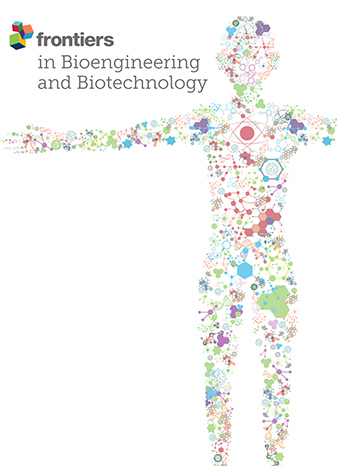Bidirectionally validated in silico and in vitro formation of specific depth zone-derived chondrocyte spheroids and clusters
IF 4.3
3区 工程技术
Q1 BIOTECHNOLOGY & APPLIED MICROBIOLOGY
引用次数: 0
Abstract
3D multicellular self-organized cluster models, e.g., organoids are promising tools for developing new therapeutic modalities including gene and cell therapies, pharmacological mechanistic and screening assays. Various applications of these models have been used extensively for decades, however, the mechanisms of cluster formation, maintenance, and degradation of these models are not even known over in-vitro-life-time. To explore such advantageous models mimicking native tissues or organs, it is necessary to understand aforementioned mechanisms. Herein, we intend to clarify the mechanisms of the formation of cell clusters. We previously demonstrated that primary chondrocytes isolated from distinct longitudinal depth zones in articular cartilage formed zone-specific spherical multicellular clusters经硅学和体外双向验证的特定深度区衍生软骨细胞球体和集群的形成
三维多细胞自组织集群模型(如有机体)是开发新治疗模式(包括基因和细胞疗法)、药理学机理和筛选试验的有前途的工具。几十年来,这些模型的各种应用已被广泛使用,然而,这些模型在体外生命周期内的集群形成、维持和退化机制却不为人知。要探索这种模仿原生组织或器官的优势模型,就必须了解上述机制。在此,我们打算阐明细胞簇的形成机制。我们之前证明,从关节软骨不同纵深区分离出来的原代软骨细胞在体外形成了特定区域的球形多细胞集群。为了阐明这种细胞簇的形成机制,我们使用计算细胞波茨模型(Cellular Potts Model)对其进行了模拟,该模型的参数由基因表达水平和组织学特征转化而来,与细胞和细胞外基质之间的相互作用相对应。这种模拟在体外与细胞簇的形成进行了形态学验证,反之亦然。由于特定区域的软骨细胞硅学集群模型与相应的体外模型显示出相似性,因此硅学模型有可能用于预测用于开发、疾病和治疗模型的三维多细胞体外模型。
本文章由计算机程序翻译,如有差异,请以英文原文为准。
求助全文
约1分钟内获得全文
求助全文
来源期刊

Frontiers in Bioengineering and Biotechnology
Chemical Engineering-Bioengineering
CiteScore
8.30
自引率
5.30%
发文量
2270
审稿时长
12 weeks
期刊介绍:
The translation of new discoveries in medicine to clinical routine has never been easy. During the second half of the last century, thanks to the progress in chemistry, biochemistry and pharmacology, we have seen the development and the application of a large number of drugs and devices aimed at the treatment of symptoms, blocking unwanted pathways and, in the case of infectious diseases, fighting the micro-organisms responsible. However, we are facing, today, a dramatic change in the therapeutic approach to pathologies and diseases. Indeed, the challenge of the present and the next decade is to fully restore the physiological status of the diseased organism and to completely regenerate tissue and organs when they are so seriously affected that treatments cannot be limited to the repression of symptoms or to the repair of damage. This is being made possible thanks to the major developments made in basic cell and molecular biology, including stem cell science, growth factor delivery, gene isolation and transfection, the advances in bioengineering and nanotechnology, including development of new biomaterials, biofabrication technologies and use of bioreactors, and the big improvements in diagnostic tools and imaging of cells, tissues and organs.
In today`s world, an enhancement of communication between multidisciplinary experts, together with the promotion of joint projects and close collaborations among scientists, engineers, industry people, regulatory agencies and physicians are absolute requirements for the success of any attempt to develop and clinically apply a new biological therapy or an innovative device involving the collective use of biomaterials, cells and/or bioactive molecules. “Frontiers in Bioengineering and Biotechnology” aspires to be a forum for all people involved in the process by bridging the gap too often existing between a discovery in the basic sciences and its clinical application.
文献相关原料
| 公司名称 | 产品信息 | 采购帮参考价格 |
|---|
 求助内容:
求助内容: 应助结果提醒方式:
应助结果提醒方式:


